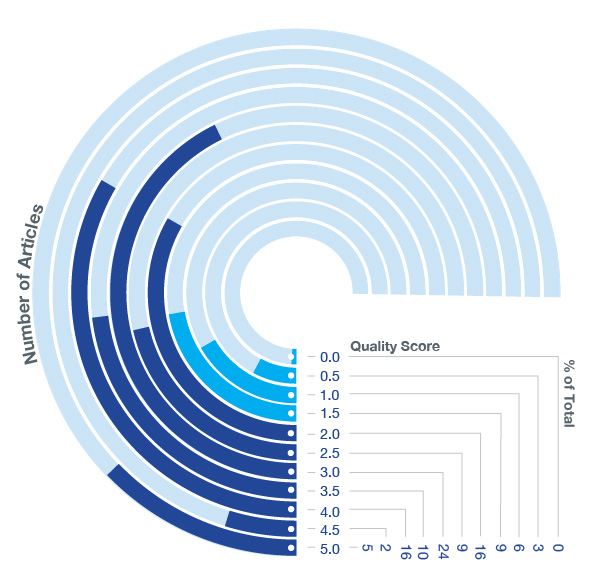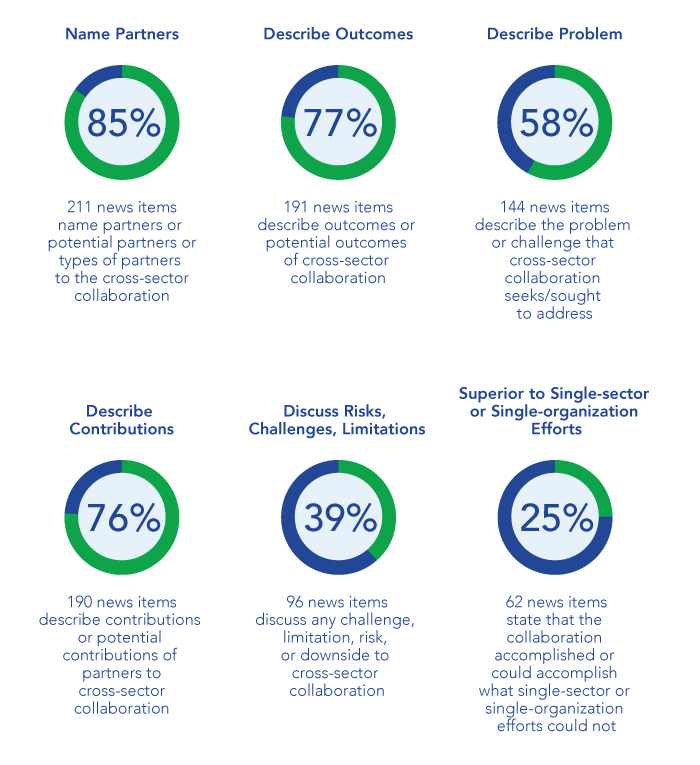Section I: How are journalists covering cross-sector collaboration?
Section II: What challenges do journalists face in covering cross-sector collaboration?
Section III: Questions journalists should consider when covering cross-sector collaboration
Section I: How are journalists covering cross-sector collaboration?
To better understand how journalists cover cross-sector collaboration, we reviewed 249 articles from 10 newspapers across the country. While we found some excellent coverage, the articles we reviewed revealed the difficulty of covering cross-sector collaboration in a way that goes beyond the “who” and the “what” to more complicated and arguably more critical components, including the problem the collaboration seeks to address, partners’ contributions, the risks or limitations of collaboration, and more.
We assessed each of the news items for a set of six “quality criteria,” and scored them based on whether or not they met these criteria. The first two criteria are baseline expectations for coverage, addressing the “who” and the “what” of cross-sector collaboration, elements of “press release journalism.” These were weighted at half the value of the other criteria:
Does the news item name partners or types of partners?
Does the news item describe the outcomes of collaboration?
The other four criteria represent elements of cross-sector collaboration that are not only more difficult to understand and convey, but also key to shaping the public’s understanding of cross-sector collaboration.
Does the news item describe the problem that cross-sector collaboration seeks to address?
Does the news item describe the contributions of partners to the collaboration?
Does the news item discuss any challenge, limitation, risk, or downside to collaboration?
Does the news item state that a collaboration accomplished what single-sector efforts could not?
With our two baseline criteria assigned .5 points each and our remaining four criteria assigned 1 point each, the highest possible quality score each article could achieve was a 5 and the lowest a 0. On this scale, the average score of our 249 articles was 2.78, with a plurality of articles scoring a 3.

A closer look at the frequency of individual quality variables suggests that communicating the problem the collaboration seeks to address, discussing challenges, limitations, or risks, and discussing the rationale for a multi-sector approach often are excluded from coverage of cross-sector collaboration.

See a full discussion of our method and findings in the report How the Press Covers Cross-sector Collaboration.
